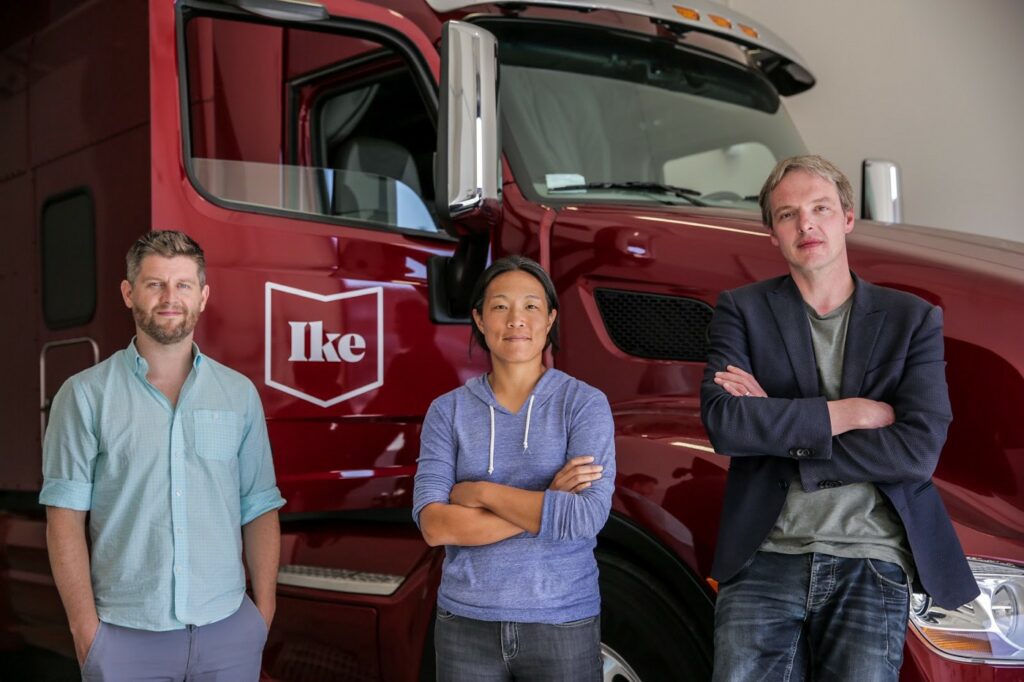
Selective State Space Models: Solving the Cost-Quality Tradeoff
As AI is increasingly used in production scenarios, costs are mounting. Are alternative architectures the solution?

Co-written with Kevin Zhang of Bain Capital Ventures
Today, we are thrilled to announce that Bain Capital Ventures has led a $52 million Series A investment in Ike, a provider of software to enable self-driving trucks. Over-the-road freight will be one of the first safe, commercial applications of autonomy, and Ike has the right team, values and technology to lead the way.
Broadly, we have been one of the most active venture investors in supply chain technology, including in FourKites, which announced $50 million of follow-on financing today. FourKites has grown more than twentyfold since we led the Series A just over two years ago, and reflects how supply chain leaders are increasingly open to transformative technology. Self-driving trucks will be one of the most impactful elements of this wave.
Achievable autonomy
A little over a decade ago, Bain Capital Ventures led the first institutional investment in Kiva Systems. Kiva remains among very, very few companies to ever deliver a commercial autonomy product at scale. Before self-driving cars became the hot commodity it is today, Kiva’s robots leveraged machine learning, computer vision, simulation and other before-its-time technologies to transform fulfillment and warehousing.
One of the rules we learned from Kiva is that in autonomy, constraints are king; we focused on conveying shelves to human pickers, rather than the complex task of picking and placing each item in the box. Kiva owned an enclosed warehouse environment, could add navigation guides on the floor, and didn’t have to deal with items of all shapes and sizes. The way we see it, the pick-and-place of self-driving is urban and suburban passenger vehicles — the complexity of children, bikers, four-way intersections, weather and more are why some believe we’ve entered a period of disillusionment with autonomy.
On the other hand, long-haul trucking and highway autonomy simplifies many edge cases that would otherwise challenge today’s autonomy capabilities. The unit of commercial opportunity for trucks can be A-to-B routes, specific trips in autonomy-friendly jurisdictions and climates. Few to no pedestrians, no turns and intersections, and eventually no passengers to keep comfortable — each means that a commercial product is closer to reality.
Trucking is an essential source of employment in America, and we do not make this investment in ignorance of the potential implications. Long-haul trucking in particular has been subject to labor shortages and high churn, as a new generation of workers opt out of long stretches of time away from home and family. We and the Ike team believe there is an opportunity for falling long-haul freight costs to spur employment in last-mile delivery; regardless, we plan to actively engage with policymakers, labor leaders and drivers to encourage a positive future.
Building long-term fast
As this thesis on autonomy came together, my partners and I were impressed by Ike in particular. There is no better real-world experience than that of Ike’s team, who served in the leadership of the self-driving truck program at Uber’s Advanced Technologies Group.
Alden Woodrow led product management, Nancy Sun helmed engineering and Jur van den Berg led motion planning and key autonomy software efforts. Everyone we’ve spoken to has raved about their intellect, integrity and collaborative approach, and the 20+-strong Ike team that has come together in the months since has been no less impressive.
One of the values on which we align with the Ike team is the need to build “long-term fast”. When it comes to self-driving, teams and the media tend to place a lot of emphasis on demos and metrics with unclear correlation to commercializable product. In contrast, Ike is focused on a roadmap with detailed, feature-based milestones and a timeline to market.
One momentous decision that Ike made was to give Nuro, a fellow autonomous vehicle software company, a stake in the business in exchange for a copy of Nuro’s self-driving stack. Nuro was founded by incredibly talented engineers with experience at Waymo; the company focuses on last-mile delivery, but much of the infrastructure remains applicable to trucking. This is not an ongoing subscription lease — it is code that the Ike team will revise and extend. Not having to rebuild the basic foundations of autonomy gives the most experienced team in trucking autonomy a dramatic headstart on product.
Hitting the road
At the dawn of motorized freight, a young Dwight D. Eisenhower traversed the United States with the 1919 US Army Motor Transport Corps Convoy. Starting in D.C., they drove 3,000 miles to arrive, six days late, in San Francisco. They encountered all manner of obstacles: truck driving was new and difficult, and unpaved roads were pockmarked with unfilled potholes and unbridged creeks. But the journey inspired Eisenhower, and eventually built support for the Interstate Highway System — and American roads as we know them today.
On the centennial of Eisenhower’s fateful journey, we are excited to join the Ike team, alongside our friends at Redpoint, Fontinalis, Neo, and Basis Set Ventures, to set off on an equally important expedition. As my colleague Kevin and I join Ike’s board, we recognize that the road ahead will be no less challenging, but we are animated by Ike’s equally momentous opportunity — and capability — to transform transportation and mobility forever.
As AI is increasingly used in production scenarios, costs are mounting. Are alternative architectures the solution?
Cube is the standard for providing semantic consistency to LLMs, and we are investing in a new $25M financing after leading the seed round in 2020.
In this edition of “In the Lab,” Amit Aggarwal explains why he’s building an AI startup in BCV Labs after selling his company The Yes to Pinterest.